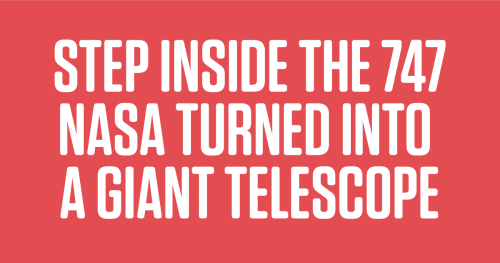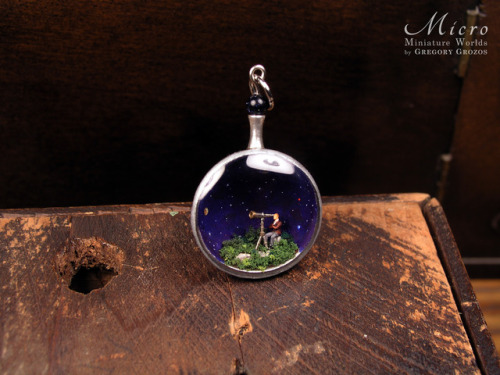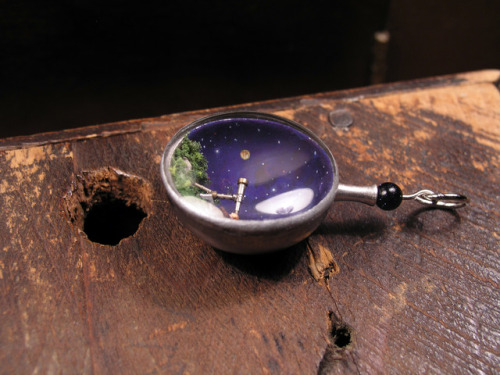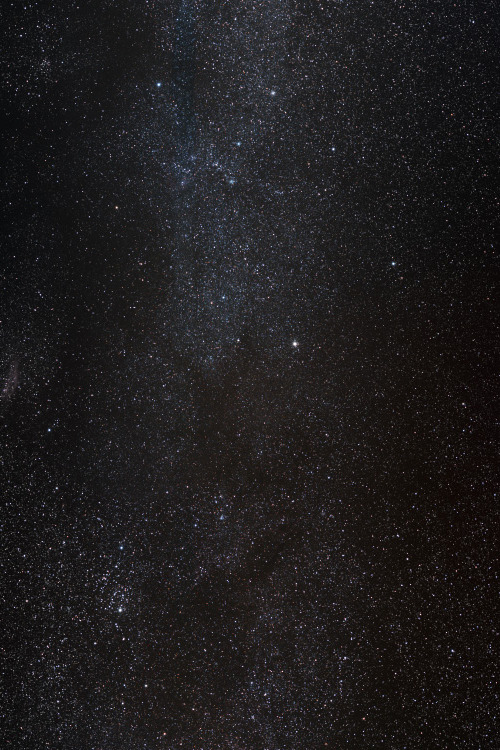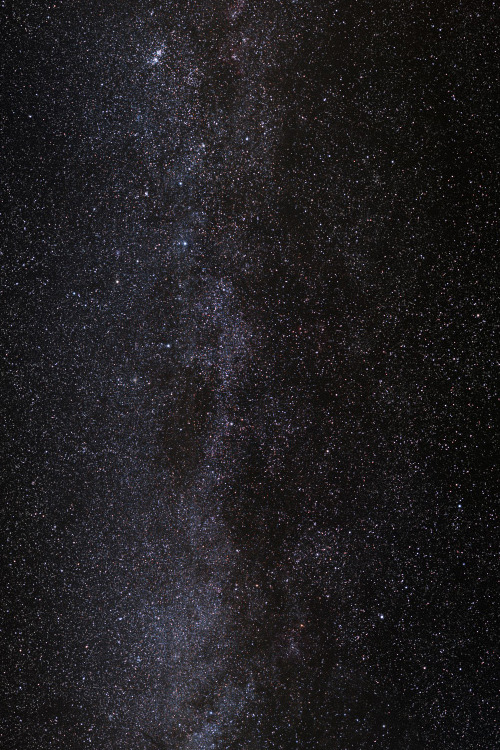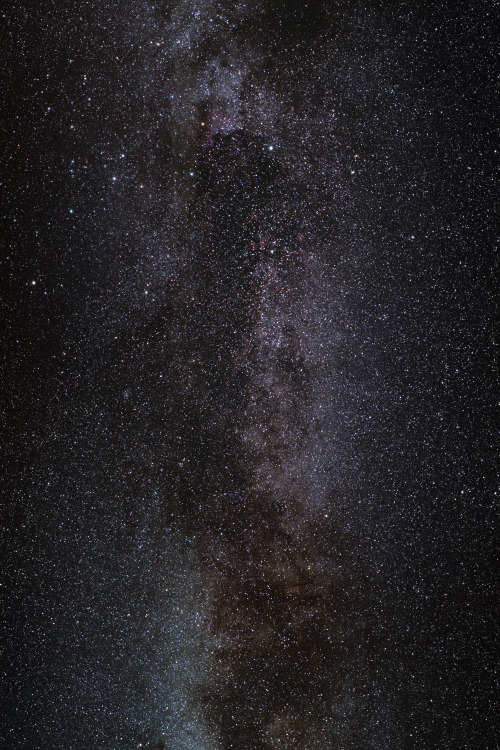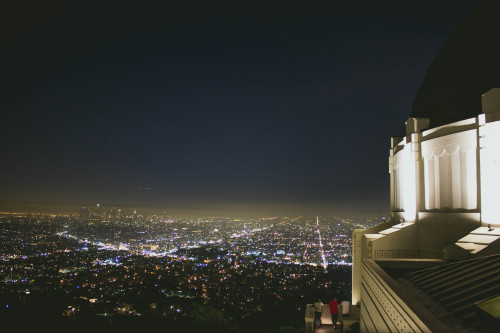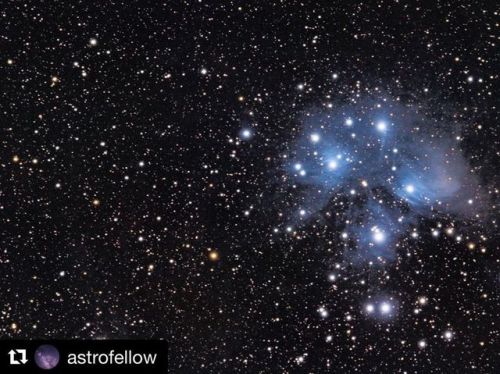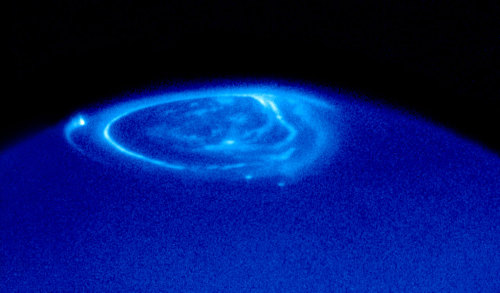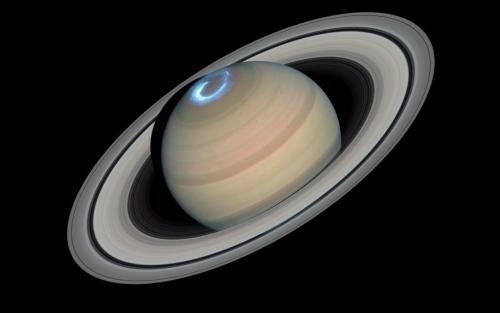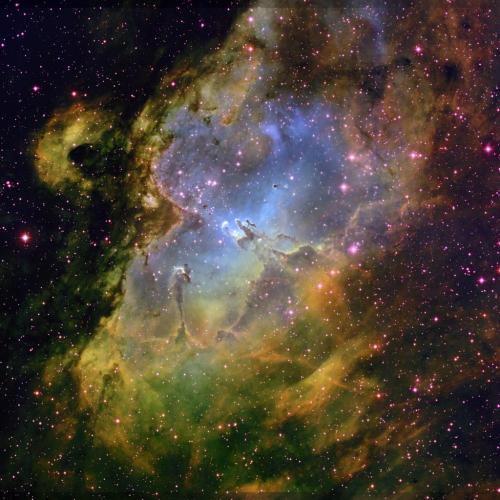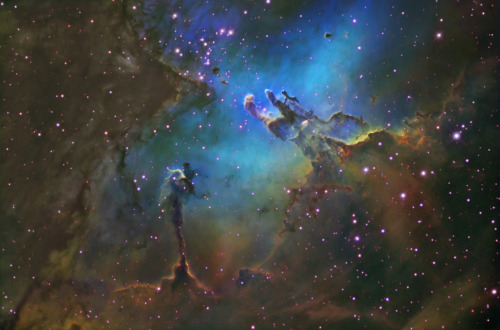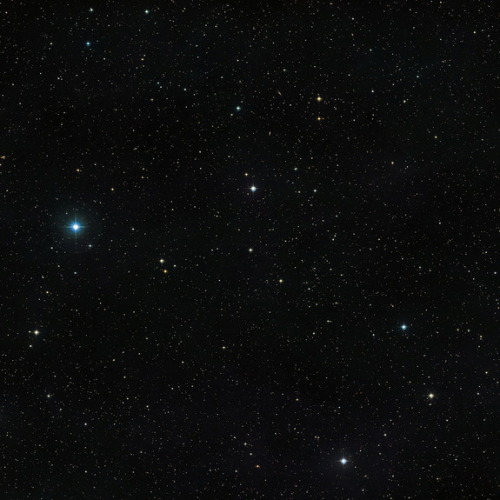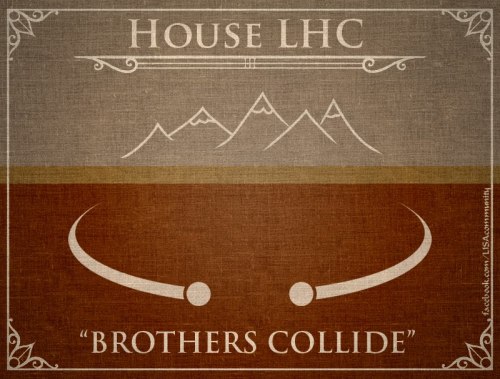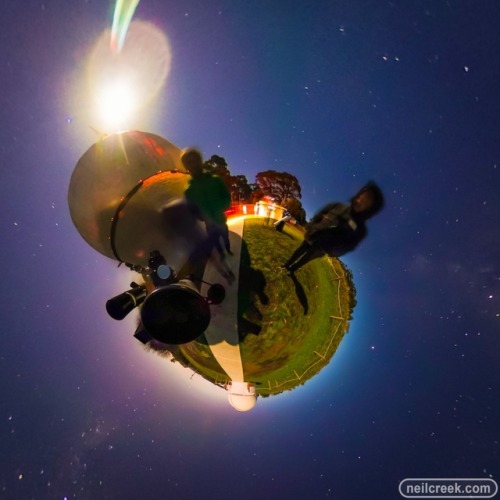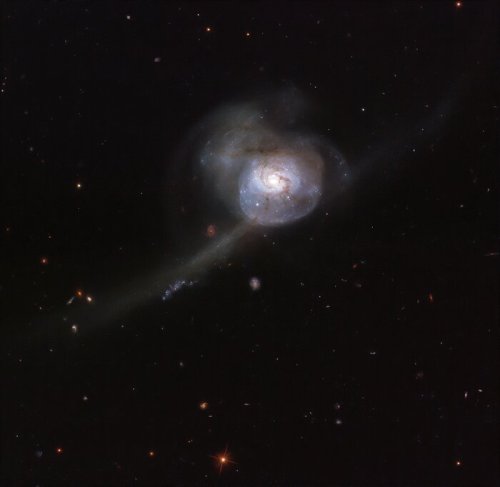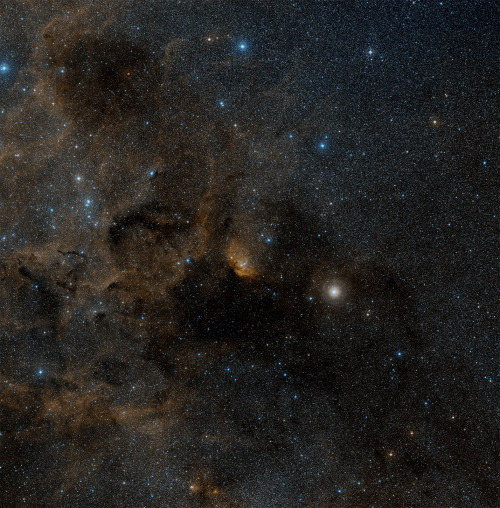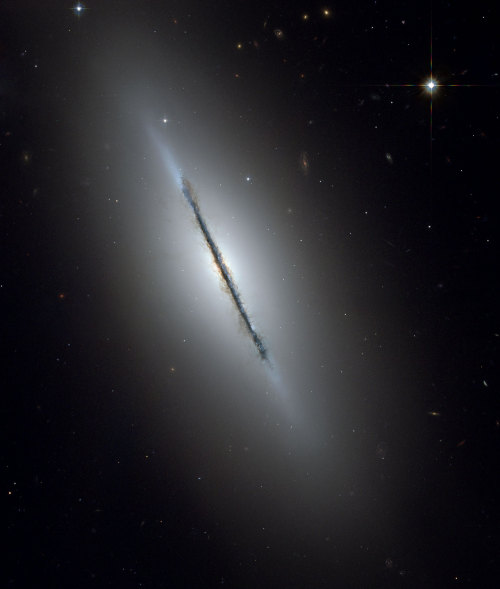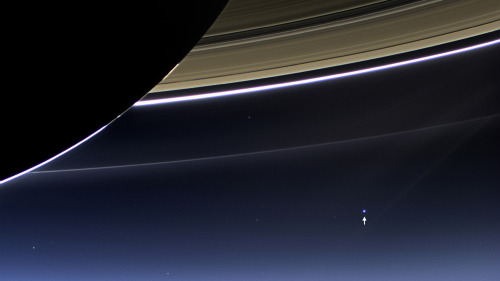#telescope
Oh,@nasa is going to snap that perfect picture of the cosmos, all right. Even if it means cutting a giant hole in a 747 to get it.
Read More: Take a Ride in the 747 NASA Turned Into a Giant Telescope
Post link

The red shadow of planet Earth is broadcasted across the moon in this image taken on May 26 near Sydney, Australia. On that crisp, clear autumn night a perigee full moon (the moon at its closest point to Earth) slid into the umbra. Its total phase lasted only about 14 minutes which is generally short for a lunar eclipse. The composite of 6 exposures also shows the wide range of brightness variations within Earth’s shadow against a faint background of stars.
Image Credit & Copyright: Peter Ward (Barden Ridge Observatory)
I have been slowly building this piece for a while now. It is one of my most intricate pieces on this scale and I am really excited about how it turned out. As you can see, it is a tiny Victorian library in which I have added a great amount of fine detail, including an armillary sphere, a telescope, a sextant, hand-painted paintings, globes and books and much more. I have used tiny watch parts in building many of these details. It is closed with a piece of glass which I have cut and ground down to size from an incandescent lamp, giving a clarity and curvature unusual for pocket watch crystals. Enjoy!
This is also the link to my Etsy shop:
www.etsy.com/shop/MicroJewellery
Post link
Each one of my pieces I make to be an entire tiny world, that one can carry on him or her. This miniature world pendant is of a man observing the marvels of the cosmos through his telescope. Astronomy has been the most ancient spiritual and scientific endeavor of man, his pursuit to understand the universe, its motions and how they correlate with the changes in the seasons and the rhythm of his own life. From standing stones, the calendar, navigation, to the telescope and the observation of deep space with modern technology, it has been one of the most important aspects in the evolution of human civilization itself.
The telescope is made out of tiny watch parts and the entire piece is closed with glass on the front.
You can find it at my Etsy shop:
www.etsy.com/shop/MicroJewellery
Post link

James Webb Space Telescope. Credit: NASA/Chris Gunn
By Shardell Joseph
A team of NASA astronomers will observe dwarf galaxies and properties of dark matter using the newly completed James Webb Space Telescope. Fully assembled in late this year, the telescope was joined by two halves amounting to $9.7bln, and is scheduled to launch in March 2021.
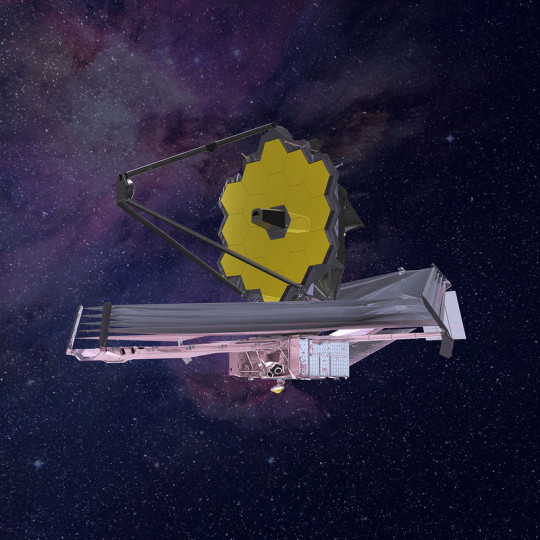
Artist conception of James Webb Space Telescope. credit: Northrop Grumman
‘The assembly of the telescope and its scientific instruments, sunshield and the spacecraft into one observatory represents an incredible achievement by the entire Webb team,’ NASA Goddard Space Flight Centre Webb Project Manager, Bill Ochs, said in a statement.
‘This milestone symbolises the efforts of thousands of dedicated individuals for over more than 20 years across NASA, the European Space Agency, the Canadian Space Agency, Northrop Grumman and the rest of our industrial and academic partners.’

Primary mirror segment testing. Credit: NASA/MSFC/David Higginbotham
The telescope will be used to conduct two separate studies – to observe dwarf galaxy companions to the Milky Way and the nearby Andromeda Galaxy. According to NASA, studying these small companions will help scientists learn about galaxy formation and properties of dark matter, which accounts for 85% of matter in the universe.
To observe these distant never-seen-before parts of the universe, the Webb observatory is equipped with an arsenal of revolutionary technologies. NASA claims it to be the most sophisticated and complex space science telescope ever created. Among the most challenging of these technologies is the five-layer sunshield, designed to protect the observatory’s mirrors and scientific instruments from light and heat, primarily from the Sun.

Webb Telescope Crew Flexes Robotic Arm at NASA. Credit: NASA/Chris Gunn
According to NASA, Webb has passed other deployment tests carried out during its construction. Technicians used gravity-offsetting pulleys and weights to simulate zero-gravity, which would be encountered in space. This deployment was carefully monitored, tensioning each individual layer, and technicians concluded that once in orbit, they will function flawlessly.
‘This test showed that the sunshield system survived spacecraft element environmental testing, and taught us about the interfaces and interactions between the telescope and sunshield parts of the observatory,“ said NASA Webb Telescope Sunshield Manager, James Cooper. ‘Many thanks to all the engineers and technicians for their perseverance, focus and countless hours of effort to achieve this milestone.’

The James Webb Space Telescope’s Sunshield Membrane. Credit: Northrop Grumman Aerospace Systems
Forboth programmes, the Webb telescope will be tested for its accuracy and precision. ‘It’s a very tricky situation, because basically what we want to measure are very tiny motions,’ explained co-investigator Andrea Bellini of STScI. ‘The accuracy we want to achieve is like measuring something that moves a few inches a year on the surface of the Moon, as seen from Earth.’
There is excitement around the development of the telescope as it will have the capacity to solve mysteries in our solar system, look beyond to distant worlds around other stars, and probe the mysterious structures and origins of our universe and our place in it.

Gold-coated Engineering Design Unit (EDU) Primary Mirror Segment. Credit: Drew Noel

Pōwehi: “embellished dark source of unending creation.“
Portrait of a group of deer hunters posing on a hillside in Glenfeshie, Scotland, c. 1858. Taken by Scottish photographer Horatio Ross.
Source: Metropolitan Museum of Art.
Post link
#birr #birrcastle #ireland #astronomy #mirror #telescope #upsidedown #sciencecentre #kimcums
Post link
#Repost @astrofellow
・・・
2019-10-04 Pleiades (M45)
— Equipment I used:
Nikon D7100
WO Z61
iO SkyGuider Pro
—
Blue & Gold!
I’d like you all to meet The Seven Sisters, an open star cluster containing B-type stars located in the constellation of Taurus. My personal favorite open cluster. I really wanted to shoot the Pleiades and couldn’t wait until they were in the sky earlier in the night, so I shot this on a night where they would be high enough starting at 22:30; it turned out to be a pretty late night. It was also the night before my birthday, so I spent the early morning of my birthday accompanied by The Seven Sisters; Sterope, Merope, Electra, Maia, Taygeta, Celaeno, and Alcyone. Along with their parents, Atlas and Pleione.
Enjoy!
—
A little about this object:
The Pleiades were formed within the last 100 million years. They’re about 444 light-years away from us. Around the brightest of the stars, you see the reflection nebulae; clouds of interstellar dust which reflect the light of nearby stars. There are two theories about the nebulae; that it could be leftover material from the formation of the cluster, or that it could be an unrelated dust cloud in the interstellar medium through which the stars are currently passing. There is an origin of the name Pleiades, as well as some very interesting folklore and mythology. Look into it!
Also, astronomers estimate that the cluster will survive for about another 250 million years, after which it will disperse due to gravitational interactions with its galactic neighborhood.
—
Clear skies,
— M. Norcia
103 light frames x 60-seconds @ ISO 800
20 dark frames
20 flat frames
— @williamoptics @highpointscientific @astrobackyard @ioptron_telescopes
#pleiades #stars #astrophotography #space #astronomy #nightskyphotography #telescopes #nightsky #starrynight #universetoday #explore #naturephotography #nikon #stargazing #starrysky #nightphotography #taurus #universe #telescope #nebula #m45 #nature
https://www.instagram.com/p/B3dbq6Ph3Yb/?igshid=1h9f3ylzceafj
Post link
Match #443
Makeup by Amyphi_artistry|The Pinwheel Galaxy also known as M101, image created with combined data in the infrared, visible, ultraviolet and X-rays from four of NASA’s space-based telescopes.
More matches here
Post link
Close-ups of the Eagle Nebula’s Spire, which is 9.5 light years tall, and the Pillars of creation. There is evidence that the Pillars of Creation were actually destroyed 6000 years ago by a supernova, but because the nebula is 7000 light years away, we will still see them for another millennia.
Post link
A new alien planet-hunting tool has found no trace of a brown dwarf more than 100 light-years from Earth, despite evidence that the misfit failed star is eclipsing its partner, a team of puzzled astronomers says. European Southern Observatory’s (ESO) new SPHERE (Spectro-Polarimetric High-contrast Exoplanet Research) on the Very Large Telescope didn’t find a sign of a brown dwarf — sometimes called a “failed star” — near the double star V471 Tauri, despite the fact that scientists were pretty sure they would find one. The scientists used the ESO observations to create a video zoom-in on the strange star system.
Post link
SCIENCE IS COMING.
In honor of the release of Game of Thrones Season 6 today, check out these amazing House designs made by students from the Albert Einstein Institute. Each Game of Thrones inspired sigil celebrates a different changing project in physics and space exploration.
House Hubble - Hubble Space Telescope
House ISS - International Space Station
House ITER - Nuclear Fusion Project
House LHC - Large Hadron Collider
House Curiosity - Mars Science Laboratory
House LISA - Laser Interferometer Space Antenna
House JWST - James Webb Space Telescope
House VLA - Very Large Array
I’m super torn because while I’m #teamradioforever, I’m also a lifelong #hubblehugger. I guess if I’m forced to chose, it might have to be House VLA.
-Summer
[HTCharee Peters]
Given last night’s Game of Thrones Season 8 premiere, it’s clearly time for this to make the rounds again! What I forgot to add the first time around was that the students who made this were working on the Laser Interferometer Space Antenna (LISA) Mission (a space-based version of LIGO). The original post sharing these designs is on LISA’s Facebook Page.
Also, I guess I put something out into the universe by saying I’m House VLA because that will officially be the case as of July 1st. ;)
-Summer
Post link
THE GREAT CLUSTER IN HERCULES!
This is a collection of over 300,000 stars, located in the constellation Hercules.
This type of star cluster is known as a globular cluster, the stars are packed together more than a 100x more densely than our star is with its stellar neighbours.
So densely in fact, that the stars often collide and form NEW STARS.
- Live view of what you would actually see through the telescope.
- A single 30 second exposure with my Canon 450d.
- 18x stacked 30 second images and a bit of tweaking done in photoshop.
The telescope used to image - Meade LX200 14 inch SCT.

Post link
Stargazing at MBO - It was a cold night with a bright moon, but that didn’t stop members at Mount Burnett Observatory getting outside and enjoying the winter night sky. This tiny planet panorama shows the observatory’s two domes and a close up of one of the smaller dobsonian telescopes.
Post link
Milky Way at MBO - The Milky Way rises behind two telescope domes and a trig point at Mount Burnett Observatory while members observe and photograph the stars.
Camera: Canon 5D3Lens: Canon 24-70mm f2.8 @24mmSettings: 30sec f2.8 ISO3200Processed in Lightroom
Post link
Running Chicken Nebula - Camera: ASI1600MC-C
Telescope: 8“ f4 reflecting newtonian
Mount: NEQ6
Guiding: Orion StarShoot Autoguider
Control software: Sequence generator pro
24x5min exposures, 2hrs total
Bias and flat calibration frames used
Edited in Pixinsight and Lightroom
Post link
When Mice Collide |APOD
These two mighty galaxies are pulling each other apart. Known as the “Mice” because they have such long tails, each spiral galaxy has likely already passed through the other. The long tails are created by the relative difference between gravitational pulls on the near and far parts of each galaxy. Because the distances are so large, the cosmic interaction takes place in slow motion – over hundreds of millions of years. NGC 4676 lies about 300 million light-years away toward the constellation of Bernice’s Hair (Coma Berenices) and are likely members of the Coma Cluster of Galaxies. The above picturewas taken with the Hubble Space Telescope’s Advanced Camera for Surveys in 2002. These galactic mice will probably collide again and again over the next billion years until they coalesce to form a single galaxy.
Post link
The Complete Book of Home Decorating, Barbara Mayer, 1994
Salvaged & scanned by @jpegfantasy️
Post link
Australia is playing a key role in the world’s biggest search for extra-terrestrial intelligence.
An Australian radio telescope in operation for more than 50 years will be one of the primary instruments used in a new $100m (A$137m; £64m) search for life elsewhere in space.
The 10-year project - known as the Search for Extra-Terrestrial Intelligence (SETI) - was announced this week by Prof Stephen Hawking in London, and is being funded by Russian billionaire and venture capitalist Yuri Milner.
One of the two main radio telescopes being used in the search is a 64-metre-wide parabolic dish known as the Parkes telescope.
Operating since 1961, the Parkes telescope played an important role in televising the Apollo 11 moon landing.
“The Parkes telescope is one of the largest, fully steerable telescopes in the world,” says Prof Matthew Bailes, an astronomer at Swinburne University of Technology
Cosmologist Prof Stephen Hawking helped launch the latest search for alien life in space
Post link
Viewing the Big Bang.
A sensitive microwave telescope at the South Pole announced the discovery of polarization distortions in the Cosmic Microwave Background Radiation recently, which is the observable afterglow of the Big Bang.
Post link




The Space Shuttle Discovery, the shuttle that launched the Famed Hubble Telescope into space, and flew 39 missions to space. The shuttle is so much larger than I thought it was. What an incredible piece of engineering and technology.
Galassia Lenticolare NGC 5866 (Galassia Fuso)
Credits: NASA, ESA, and The Hubble Heritage Team STScI/AURA
Post link
La terra vista da Saturno (Earth seen from Saturn)
Credit: NASA/JPL-Caltech/Space Science Institute
Post link

